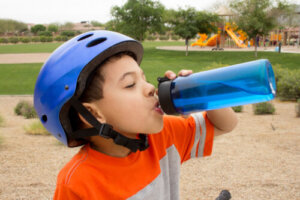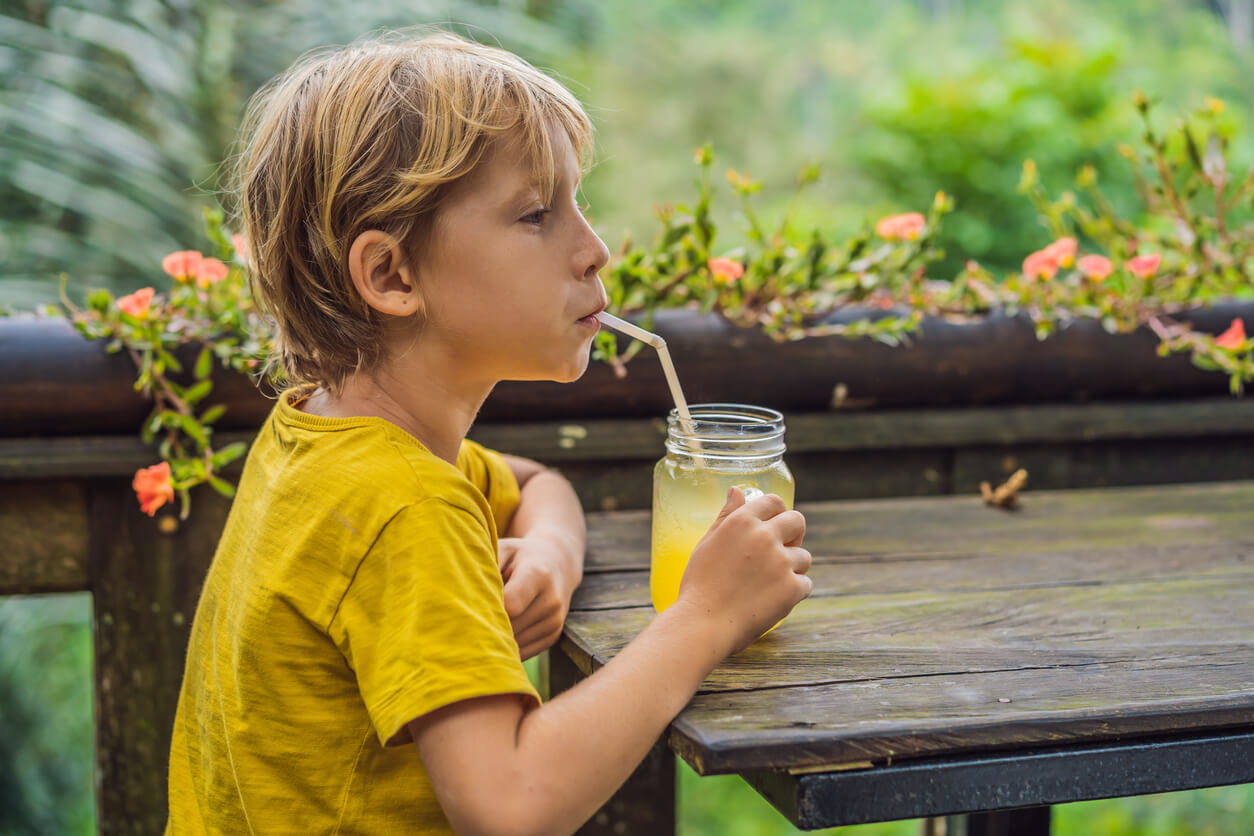3 Hydrating Drinks for Children


Written and verified by the nutritionist Saúl Sánchez Arias
Choosing good hydrating drinks for children is key to preventing dehydration processes that could seriously jeopardize their health. Especially in the summer period, it’s important to ensure that water demands are met in order to compensate for increased losses through sweating. Otherwise, body temperature will soon rise and physiological inefficiencies will be experienced.
Before we begin, we must emphasize the fact that the best tool to ensure a good state of hydration is natural mineral water. Even so, there are other alternatives that can accompany this liquid to increase the variety of the diet and whose function will be positive. However, they tend to be more energetic, so care must be taken when calculating the caloric volume of your child’s diet so as not to overdo it.
Hydrating drinks for children
In the following article, we’ll show you which are the best hydrating drinks for children. Keep in mind that they should be included in the context of a varied and balanced diet to avoid deficits of essential nutrients that condition the functioning of the human body.
1. Cow’s milk

Whole cow’s milk is a quality food with high nutritional density. It contains proteins of high biological value, with all the essential amino acids and a good digestibility score. These elements are essential to ensuring the development of muscle mass and guaranteeing homeostasis in the internal environment, as stated in a study published in the Annals of Nutrition & Metabolism.
However, the whole milk version should always be chosen over those with a lower fat content. Milk lipids are of high quality and contain a significant amount of fat-soluble vitamins, which are important in order to prevent the development of complex diseases in the medium term. Among them, vitamin A stands out above all.
2. Oat milk
Oat milk can be a hydrating liquid for little ones, as long as it is consumed without added sugars. It’s an excellent source of phytochemicals and B vitamins, so it can help to complete daily nutritional requirements. In addition, it’s not very energetic, so it won’t excessively alter the caloric balance of your child’s diet. In any case, it’s always advisable to check package labeling to verify the list of ingredients and to make sure that it’s of good quality.
3. Fruit juice
There’s some controversy about fruit juice as some experts say that it’s better to limit its presence in the diet because it contains a high amount of simple sugars. And these could damage the metabolism and increase the risk of developing metabolic diseases such as type 2 diabetes. However, the antioxidants fruit juices contain could reduce this risk and thus achieve the opposite effect.
What’s clear is that we’re talking about beverages that provide phytochemicals and vitamins in high quantities. In this case, we should highlight vitamin C, which is a nutrient that contributes to improving immune function, both innate and adaptive, as evidenced by research published in the journal Nutrients. However, it’s not a good idea to abuse them and it’s better to limit their presence in the diet to a maximum of one glass a day. The consumption of whole fruits is always preferable.

Include hydrating drinks in the diet of children
As you’ve seen, there are a number of hydrating drinks that can be included in the diet of children and that provide a significant amount of essential nutrients and antioxidants. All these elements contribute to maintaining a good state of health over the years and limit the risk of developing chronic and complex diseases such as type 2 diabetes or other cardiovascular diseases.
Finally, keep in mind that eating well on its own isn’t enough. It’s also key that you promote other good habits from the early stages of life. For example, it’s essential that you instill in young children the need to work on their physical strength in a regular, constant, and controlled manner. This way, good growth is favored and maximum bone mineral density is increased, which is ideal for preventing osteoporosis in the near future.
All cited sources were thoroughly reviewed by our team to ensure their quality, reliability, currency, and validity. The bibliography of this article was considered reliable and of academic or scientific accuracy.
- Richter, M., Baerlocher, K., Bauer, J. M., Elmadfa, I., Heseker, H., Leschik-Bonnet, E., Stangl, G., Volkert, D., Stehle, P., & on behalf of the German Nutrition Society (DGE) (2019). Revised Reference Values for the Intake of Protein. Annals of nutrition & metabolism, 74(3), 242–250. https://doi.org/10.1159/000499374
- Carr, A. C., & Maggini, S. (2017). Vitamin C and Immune Function. Nutrients, 9(11), 1211. https://doi.org/10.3390/nu9111211
This text is provided for informational purposes only and does not replace consultation with a professional. If in doubt, consult your specialist.








